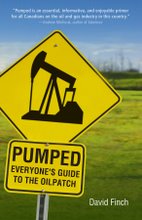Canadians gobble up oil and gas resources 100,000 times faster than nature creates them. That's why the story of a massive oilfield like the one discovered in 1947 near Leduc, Alberta is so important.
Imperial Oil drilled a discovery well and more than 1000 wells followed. Alberta went from a poor province to one of Canada's wealthiest in just a decade.
Pipelines built during the 1950s and 1960s transported oil and gas to central Canada and the mid-western United States as well as to British Columbia and California.
But by the 60th anniversary of the discovery of oil at Leduc, in 2007, it was all over. Leduc's productive days are done.
At its peak Leduc produced over a million barrels of oil each day - as much as is coming out of the oil sands today.
Leduc made Alberta rich and allowed it to become a powerful province in the dominion of Canada. Hospitals, roads, bridges, universities, skating rinks and swimming pools all came from its generosity.
Today, conventional oil is in decline in Alberta so producers are now counting on on smaller pools of oil and gas, coal bed methane and the oil sands to keep them in business. And they're looking elsewhere in Canada and overseas for more supplies.
Petroleum production from the North may one day become an important part of the Canadian supplies and Alberta is perfectly situated to help build the infrastructure to move oil and gas from remote areas to continental markets.
The days of easy wealth are behind us.
Subscribe to:
Post Comments (Atom)


No comments:
Post a Comment